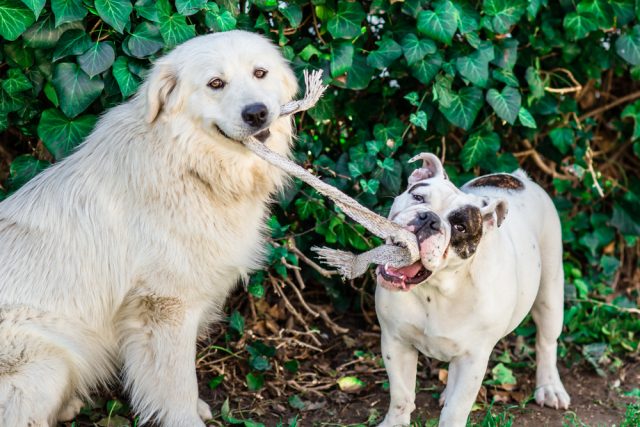The year 2023 marked a significant period in veterinary medicine, particularly concerning the health of our canine companions. A notable outbreak of canine influenza, often referred to as dog flu, raised concerns across the globe. Canine influenza is a highly contagious respiratory disease in dogs caused by specific Type A influenza viruses.
In this comprehensive article, drawing from research and findings of Cornell University’s College of Veterinary Medicine, we aim to shed light on the 2023 outbreak. We will discuss the signs and symptoms of the disease, essential information for dog owners, and guidelines on what to do if a dog is suspected of having contracted the virus.
Understanding Canine Influenza
Canine influenza virus (CIV) is primarily caused by two strains: H3N8 and H3N2. These viruses are known for their capability to rapidly mutate, making their spread and control challenging. The 2023 outbreak has been particularly concerning due to the emergence of new virus strains and their virulence. The research at Cornell University has been instrumental in understanding these developments, offering vital insights into the behavior and transmission of these viruses in canine populations.
Signs and Symptoms of Canine Influenza
According to Cornell University, the clinical presentation of canine influenza in dogs can range from no symptoms to severe illness. The most common symptoms include:
- Coughing: This is often the first sign and is usually a dry, hacking cough that can be mistaken for kennel cough.
- Fever: An increased body temperature often accompanies the cough.
- Nasal Discharge: Initially clear, it may become thick and colored as the infection progresses.
- Lethargy: Decreased energy levels and a noticeable decrease in activity.
- Reduced Appetite: Dogs may show less interest in food.
- Difficulty Breathing: In more severe cases, dogs may exhibit signs of respiratory distress.
It’s crucial to note that some dogs may be asymptomatic carriers of the virus, meaning they can spread the disease without showing any signs of illness themselves.
Transmission and Risk Factors
The transmission of the canine influenza virus occurs primarily through direct contact with infected dogs, through airborne droplets (from coughs and sneezes), and via contaminated objects (like bowls, leashes, toys, and clothing). Places where dogs congregate, such as dog parks, kennels, dog daycares, and grooming facilities, are high-risk areas for the spread of the virus.
Dogs of all ages, breeds, and vaccination statuses can be susceptible to the virus, but those with pre-existing health conditions or weakened immune systems may be at a higher risk for severe illness.
US States With Reported Cases of H3N8 and H3N2
- California
- Colorado
- Florida
- Georgia
- Idaho
- Illinois
- Indiana
- Maryland
- Massachusetts
- New Hampshire
- Oregon
- Rhode Island
- Vermont
- Washington
Prevention and Control Measures
Preventive measures are crucial in managing the spread of canine influenza. Vaccination is the primary preventive strategy recommended by Cornell University. Vaccines against H3N8 and H3N2 are available and can significantly reduce the risk of infection. Other preventive measures include:
- Good Hygiene Practices: Regular cleaning and disinfecting of pet areas and objects that come into contact with dogs.
- Limiting Exposure: Avoiding dog parks and other communal areas during outbreaks.
- Quarantine Measures: Isolating infected or exposed dogs from other dogs to prevent the spread of the virus.
What to Do If a Dog is Suspected of Having Canine Influenza
If a dog owner suspects their pet has contracted canine influenza, immediate steps should be taken to prevent further spread. Cornell University recommends the following course of action:
- Isolate the Dog: Keep the suspected dog away from other dogs to prevent the spread of the virus.
- Consult a Veterinarian: Professional advice is crucial. The veterinarian may perform a physical examination, take a history, and may require specific diagnostic tests to confirm the presence of the virus.
- Provide Supportive Care: Based on the veterinarian’s recommendations, provide supportive care to the dog. This includes ensuring the dog stays hydrated, is comfortable, and gets adequate nutrition.
- Monitor and Report Symptoms: Keep a close eye on the dog’s condition and report any changes or worsening of symptoms to the veterinarian.
- Follow Post-Illness Protocols: Once the dog recovers, follow the veterinarian’s advice regarding reintegrating the dog into its normal environment and with other pets.
Treatment and Management
Currently, there is no specific antiviral treatment for canine influenza. Treatment is mainly supportive and focuses on relieving symptoms and preventing secondary infections. This includes providing adequate hydration, ensuring proper nutrition, administering medications for fever, cough suppressants, and in some cases, antibiotics to treat secondary bacterial infections.
Recovery and Aftercare
Most dogs recover from canine influenza within two to three weeks. During recovery, it’s essential to ensure the dog is comfortable and continues to receive proper care, including good nutrition, plenty of rest, and any prescribed medications. The recovery period is crucial for the dog’s long-term health and well-being. It is important to gradually reintroduce the dog to regular activities and closely monitor for any signs of relapse or complications. Dog owners should also maintain communication with their veterinarian throughout the recovery process to ensure the best possible outcome for their pet.
Continuing Prevention and Public Awareness
In the wake of the 2023 outbreak, continuing education and awareness are vital. Dog owners should stay informed about the latest developments in canine influenza and the recommended preventive measures. Cornell University suggests ongoing community efforts to raise awareness about canine influenza, its symptoms, and ways to prevent its spread.
Right now, there’s no sign that this dog flu can jump to humans.
Future Directions in Research and Veterinary Medicine
The 2023 canine influenza outbreak has highlighted the need for continued research and development in veterinary medicine. Cornell University and other research institutions are focusing on studying the virus’s genetics, transmission patterns, and potential treatments. There is a growing emphasis on developing more effective vaccines and antiviral medications, as well as improving diagnostic methods.
In Conclusion
The dog flu outbreak in 2023 is extremely frightening for pup parents, but it’s also given us a chance to learn a lot more about keeping our dogs healthy. Thanks to places like Cornell University, we’re getting better at understanding, preventing, and handling these kinds of dog diseases. It’s all about working together – vets, researchers, dog owners, and everyone else who cares about our four-legged friends. Let’s keep our eyes open, keep learning, and keep our pups happy and healthy!




 Toledo, United States.
Toledo, United States.